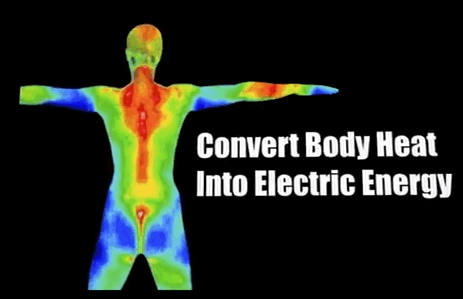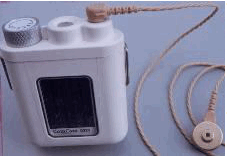Introduction/Background
Powering hearing aids has taken a number of turns over the years – from carbon microphones, through A and B batteries (heater and power battery), other different sized zinc batteries, and finally to cells consisting primarily of mercury, silver, zinc air, and now again, into rechargeable cells. But, what does the future hold?
As long as 30 years ago I often suggested in lectures that at some point the industry would find a way to use energy from the body to power hearing aids. Of course, I suspected that this might be a long time coming, especially recognizing the pressure increases that were required to amplify a signal, and I was correct.
Early Days
Years ago (1960s and 1970s), especially internationally, rechargeable cells were used commonly. These were recharged by taking energy from a larger milliamp capacity battery and transferring it to the hearing aid button power supply via direct usurption. These were the DK10 and DK20 rechargeable power buttons, if I recall the numbers correctly.
Solaris – Sun Powered

Figure 1. Solaris solar-powered hearing aid from Zenith Radio Corporation, 1958. Artist rendering from W. Staab.
The first attempt I can remember that used something other than carbon or other batteries to power a hearing aid, was the “Solaris” from Zenith Radio Corporation, in 1958 (Figure 1). The Solaris used the sun’s free and inexhaustible supply of energy to help power an eyeglass hearing aid. The instrument used Silicon cells of the same type used to power the radio transmitter in the Navy’s Vanguard satellite. The amount of sunlight received on a slightly overcast day was sufficient to operate the Solaris on free solar power, with no drain on the storage batteries. When the light was insufficient, the storage battery automatically cut in to operate the hearing aid. A standard mercury battery, or small nickel-cadmium storage battery, that weighed only a fraction of an ounce, and capable of many recharges, was designed into the instrument. Bright sunlight did not only operate the hearing aid, but also recharged the battery. The instrument was equipped with four tiny silicon sun powered cells that converted the sun’s rays directly to useable energy. The cells were described as wafer-thin slices of highly purified silicon intermixed with minute quantities of arsenic and boron. They were mounted in tandem under a plastic covering along the top of one of the “smartly-styled” eyeglass temple bars where they would be fully exposed to overhead light. The cost to the consumer was a staggering $250.00.
Many years later, I recall another solar-powered hearing aid made by a company from Israel, but I can’t seem to find that information in my files. So, if anyone recalls this and has information, I would be interested in hearing from you. I keep thinking that it was in the early-to-mid 1970s.
Rechargeable Hearing Aids
A number of rechargeable hearing aids are available today. These consist mostly of hearing aids that are placed in a charger overnight, and the cell does not have to be removed from the hearing aid. These are a takeoff on rechargeable hearing aids sold by Miracle Ear and a few others, mostly in the 1970’s, but with improved cells and ability to hold the milliamp capacity.
Solar Rechargeable Batteries
ComCare Model GLW – Rechargeable hearing aid batteries returned to solar power again in about 1996, when ComCare developed a Model GLW body-worn hearing aid {{1}}[[1]] ComCare International, Solar powered hearing aid details, file:///Users/wstaab/Desktop/Heat%20Power%20Supply/ComCare/ComCare%20International%20-%20Hearing%20Aid%20Details.webarchive[[1]]. This was designed for countries where hearing aid batteries were not readily available, or were too costly for those requiring hearing aids. The instrument was conceived in Nepal and designed in the US. The hearing aid had an internally sealed solar battery (Figure 2). It was claimed that the battery could be recharged in approximately one hour a day, in direct sunlight. It was used primarily in countries where hearing aids were not readily available. The listed charge was usually two weeks or more.

Figure 3. Solar Ear rechargeable hearing aid. The hearing aid cell can be recharged via AC or by use of the solar panels.
Solar Ear, a Brazil-based company, was developed to meet essentially a similar population as that of ComCare {{2}}[[2]] https://inhabitat.com/solar-ear-hearing-aids/[[2]]. The system consisted of an inexpensive hearing aid powered by rechargeable solar cells (Figure 3). The aid is a typically-configured behind-the-ear instrument. A pocket-size recharger is provided so the hearing aid can either be plugged into a wall outlet or charged using the built-in solar panel.
A number of hearing aid manufacturers currently provide rechargeable hearing aids, but primarily via alternating current.
What About the Future?
Human Batteries – Body-energy (temperature/movement) Power Supply
Now, to be clear, using the body as a power supply is no longer just my crazy pipe dream. Engineers have been working on ways of reclaiming wasted energy for years, first through “dumb” methods that capture waste heat, and more recently using microelectronic and nanoscale devices that capture energy from your every movement. Although, most of the work done in the energy harvesting field is related with harvesting energy from the environment instead of getting it from the human body.
However, with today’s smart phones doing more, and implementing such features as multitasking, the issue of battery life has become a big topic of conversation. The iPhone™ has been vastly improved in managing power, and companies are always looking for innovative ways to get the most out of the limited power supply they have to work with. And, with smart phones emerging as the “control centers” of our activities and communications, including hearing systems, the race is on to produce power supplies that allow for continuous, and integrated, performance.
Additionally, the need for ubiquitous electronics that help humans in everyday life is rapidly growing with increasing features and possibilities of modern mobile terminal devices. A main drawback is the demand for power supplies that allow unlimited operating and stand-by times. A solution to tackle this problem relies on the development of devices and circuits that transform energy from the user’s environment or directly from human power into electricity to supply electronic circuits and systems. This is now easy, and not a big deal if all one wants to do is check the time (as with a watch), but as soon as one tries to run something as power hungry as a cell phone, or even a hearing aid, trouble ensues. While there are different ways to harvest this energy, my interest in this blog is focused on passive energy harvesting from human power.
My next blog will describe some of the ways that the human body is being used to produce energy for low-power consumer/medical devices.







